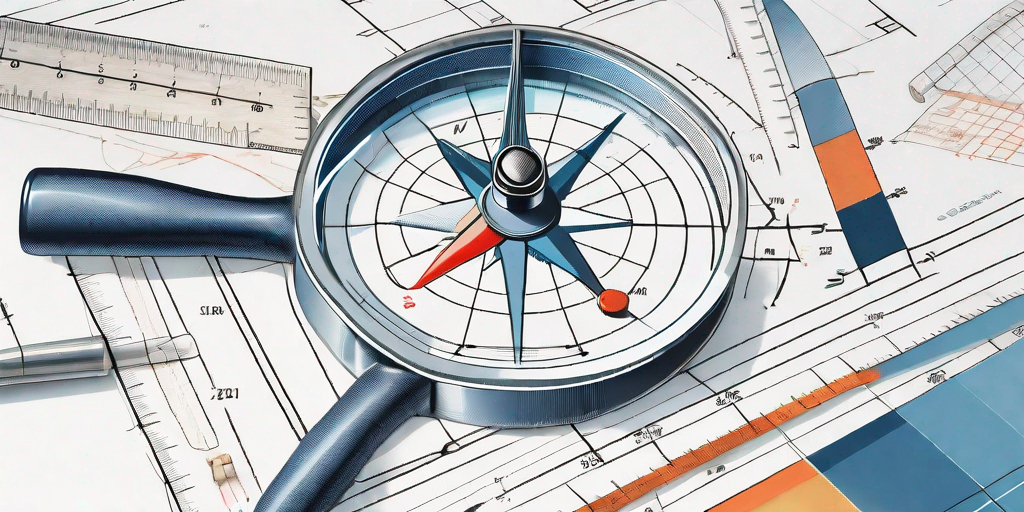LIMITED TIME OFFER
Replace all of these

with a single tool for just $1 per month for your entire team
UNLIMITED USERS
UNLIMITED PROJECTS
UNLIMITED CHATS
UNLIMITED DOCS
UNLIMITED STORAGE
AND MORE..
Understanding the Waterfall Project Management Approach

Defining Waterfall Project Management
In the world of project management, there are various approaches that organizations adopt to effectively plan and execute their projects. One such approach is the waterfall project management approach. As the name suggests, this methodology follows a linear, sequential progression, where each phase of the project flows downwards like a waterfall.
The waterfall project management approach is characterized by its rigid structure and predetermined sequence of activities. It is an ideal choice for projects that have well-defined requirements and where changes are not expected to occur frequently. The approach gained prominence in the 1970s in the field of software development, but its principles can be applied to various other industries as well.
Waterfall project management is often compared to other methodologies, such as agile project management. While agile focuses on adaptability and flexibility, waterfall emphasizes the importance of careful planning and execution. Both approaches have their strengths and weaknesses, and the choice between them depends on the specific needs and requirements of the project.
Key Principles of Waterfall Project Management
At the core of the waterfall project management approach lie a few key principles:
- Phased Approach: The project is divided into distinct phases, each with its own set of objectives and deliverables. These phases are interdependent and must be completed in a sequential manner.
- Sequential Flow: Once a phase is completed, the project moves on to the next phase. There is no room for backward movement, and each phase builds upon the previous one.
- Documented Specifications: Requirements and specifications are carefully documented at the beginning of the project. These serve as a blueprint for the entire project and help ensure that everyone is aligned on the project objectives.
- Testing at the End: Testing and quality assurance activities are predominantly performed towards the end of the project, once the development phase is complete. This helps identify any issues or bugs before the final product is delivered.
These principles provide a structured framework for project teams to follow, ensuring that each phase is completed before moving on to the next. By clearly defining requirements and conducting thorough testing, the waterfall approach aims to minimize risks and deliver a high-quality end product.
History and Evolution of the Waterfall Approach
The waterfall project management approach traces its origins back to the traditional manufacturing and construction industries, where the sequential nature of work was evident. In these industries, it was essential to complete one phase before moving on to the next, as any changes or errors could have significant consequences.
However, its widespread adoption in software development came about with the emergence of large-scale projects that required a disciplined and structured approach. In the early days, the waterfall approach was seen as an efficient way to manage projects, as it provided clear milestones and ensured that each phase was carefully planned and executed.
Over time, however, its limitations became apparent. The rigid nature of the waterfall approach made it challenging to accommodate changes or adapt to evolving requirements. As software development became more complex and dynamic, alternative methodologies, such as agile project management, gained popularity.
Agile project management focuses on iterative and incremental development, allowing for greater flexibility and adaptability. It emphasizes collaboration, continuous improvement, and the ability to respond to changing customer needs. While the waterfall approach still has its place in certain industries and projects, many organizations have transitioned to agile or hybrid methodologies to better meet the demands of today’s fast-paced and ever-changing business environment.
In conclusion, the waterfall project management approach offers a structured and sequential way to plan and execute projects. Its key principles provide a framework for teams to follow, ensuring that each phase is completed before moving on to the next. However, it is important to recognize its limitations and consider alternative methodologies when necessary.
The Waterfall Model: A Step-by-Step Breakdown
The waterfall project management approach can be visualized as a series of cascading steps. Let’s take a closer look at each of these steps:
Requirement Gathering and Analysis
The first step in the waterfall model is to gather and analyze the requirements of the project. This involves engaging with stakeholders, understanding their needs, and defining the project scope. The goal is to clearly outline what needs to be accomplished before proceeding to the next phase.
During the requirement gathering and analysis phase, project managers and business analysts work closely with stakeholders to identify the goals and objectives of the project. This includes conducting interviews, surveys, and workshops to gather information about the project’s scope, budget, and timeline.
Once the requirements are gathered, they are carefully analyzed to ensure that they are clear, concise, and achievable. This involves reviewing the gathered information, identifying any gaps or inconsistencies, and clarifying any ambiguities. The analysis phase also includes prioritizing the requirements based on their importance and impact on the project’s success.
Furthermore, during the analysis phase, project teams may also conduct feasibility studies to assess the technical, economic, and operational viability of the project. This helps in determining whether the project can be successfully implemented within the given constraints and resources.
Overall, the requirement gathering and analysis phase sets the foundation for the entire project. It ensures that all stakeholders have a clear understanding of the project’s objectives and deliverables, and provides a roadmap for the subsequent phases of the waterfall model.


